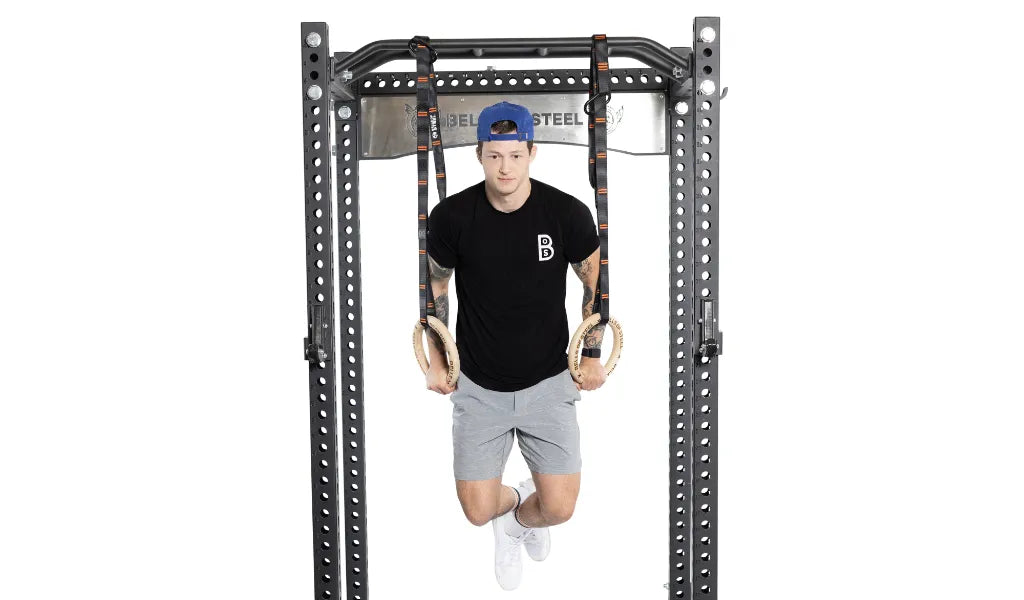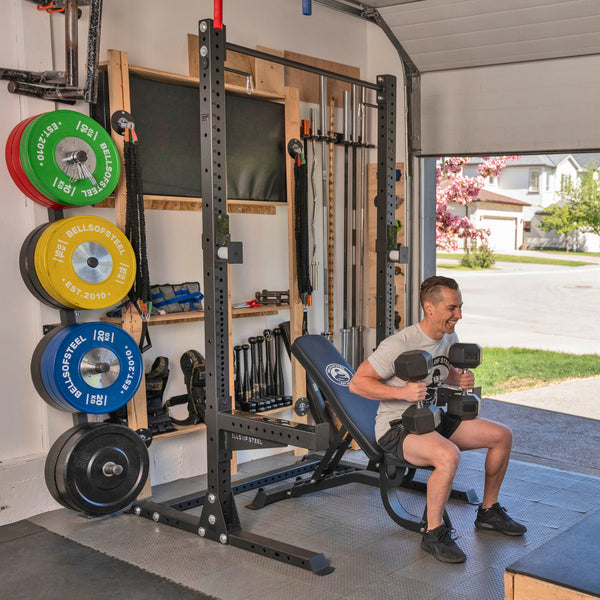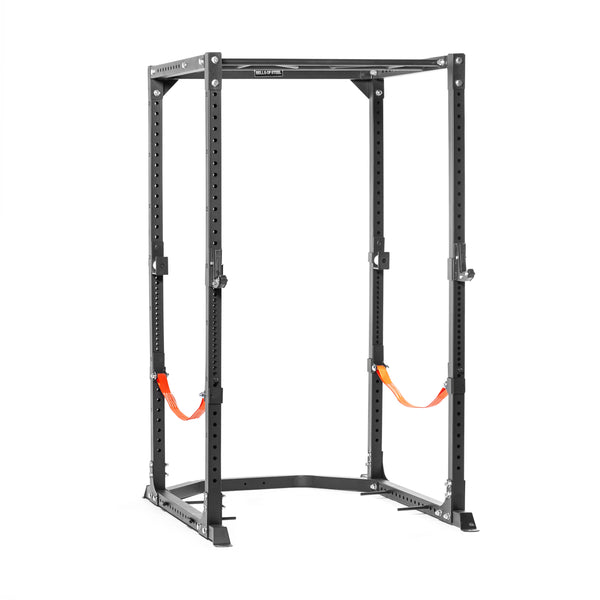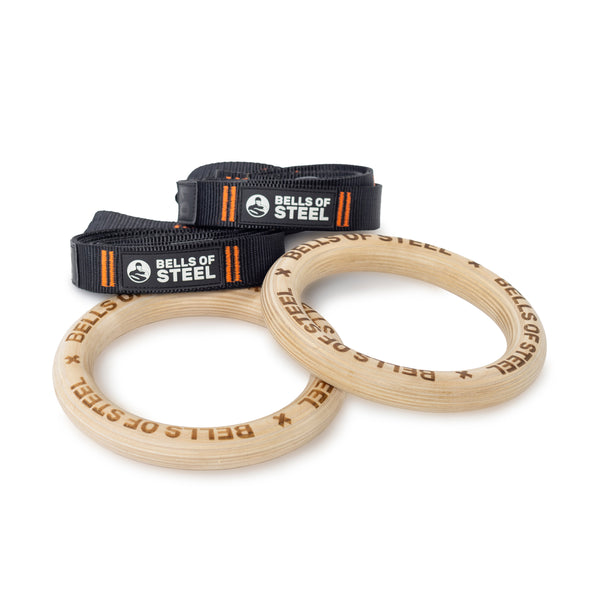Gymnastic rings might look like simple loops hanging from the ceiling, but don’t be fooled—they’re the ultimate test of bodyweight strength and control.
These unassuming rings can work muscles you didn’t even know existed, all while making you feel like a superhero in your home gym. But let’s be clear, they aren’t magic; you’ll have to put in the work. The good news? They’ll reward you with strength gains that go far beyond your typical dumbbell or barbell workouts.
Why Gymnastic Rings are a Game-Changer for Home Gyms
Gymnastic rings offer something special in the world of fitness. Unlike fixed machines or weights, the instability of the rings forces your muscles to work harder to control your movements. This means you’ll target not only the primary muscles involved in an exercise but also all the smaller stabilizing muscles that help keep you steady. Plus, they’re versatile, portable, and take up about as much space as that pile of laundry you've been ignoring.
Rings can be hung anywhere you’ve got a sturdy overhead setup, making them perfect for your home gym. Whether you're aiming for strength, muscle-building, or mobility, rings are a tool that can do it all. But don’t be fooled into thinking you can ditch your weights entirely. Balancing your ring training with traditional equipment will give you the best of both worlds.
What Muscles Do Gymnastic Rings Work?
Gymnastic rings are like a full-body workout in two circles. Here’s a breakdown of the muscle groups you can hit with rings, along with some killer exercises to target them.
1. Chest and Triceps
Exercise: Ring Dips
Ring dips are the ultimate chest, tricep, and shoulder destroyer. Unlike regular dips on a fixed bar, the rings add an extra layer of difficulty by being, well, wildly unstable. Your chest will work overtime to stabilize your body, while your triceps and shoulders handle the pushing.
Exercise: Ring Push-Ups
Think push-ups are too easy? Not on rings. Ring push-ups engage your chest, triceps, and core, adding a new challenge to a classic move. The instability of the rings forces you to stabilize your arms and torso, making this simple exercise a full upper-body workout.
2. Back and Biceps
Exercise: Ring Pull-Ups
Ring pull-ups hit your lats, traps, and biceps hard. Because the rings allow for a natural, more fluid range of motion, you can target your back muscles better than with a fixed bar. Plus, your biceps will get a fantastic workout as they struggle to keep you stable.
Exercise: Ring Rows
A fantastic back exercise that’s scalable for any level, ring rows primarily target your lats and traps but also bring your biceps into the action. Adjust the difficulty by changing the angle of your body, and get ready to feel the burn.
3. Core
Exercise: L-Sit on Rings
The L-sit is one of those exercises that looks simple but will humble you fast. Holding your body up with straight arms while lifting your legs into an “L” shape is brutal on the abs, hip flexors, and even your shoulders.
Exercise: Ring Tucks
For an easier core exercise, try ring tucks. Tuck your knees into your chest while hanging from the rings, and you’ll engage your entire core, with extra focus on your lower abs.
4. Shoulders and Stabilizers
Exercise: Ring Support Holds
Sometimes, the hardest exercises don’t involve much movement. The support hold—just holding yourself steady on the rings—forces your shoulders, triceps, and core to stabilize your body. It’s an incredible way to build strength in your stabilizer muscles, which can improve your performance across the board.
Exercise: Ring Flies
Ring flies are the ultimate shoulder and chest sculptor. Just like dumbbell flies but with the instability of the rings, this exercise will blast your shoulders and force your core to engage.
The Power of Balance in Your Training
While gymnastic rings are an incredible tool for building strength and muscle, you don’t want to rely solely on them. Balancing ring training with traditional weightlifting and other equipment ensures you hit all your muscle groups in various ways. Rings excel at building functional strength and coordination, but lifting heavy weights can help you build raw power and muscle mass. Incorporate both for a well-rounded training regimen that keeps you progressing.
FAQs About Gymnastic Rings
Q: Can gymnastic rings replace my weight training routine?
A: Not quite. While rings are fantastic for building muscle and functional strength, traditional weightlifting helps you build mass and strength in different ways. Balance the two for the best results.
Q:Are rings only for advanced athletes?
A:Absolutely not! Rings can be adapted for all fitness levels. Beginners can start with easier exercises like ring rows or knee-assisted push-ups and gradually work their way up to more advanced movements.
Q: How often should I train with rings?
A: Rings are great for adding variety to your routine, but overdoing it can lead to burnout or injury. Aim to incorporate ring training 2-3 times per week, mixed with other forms of exercise.
Conclusion: Gymnastic Rings are a Full-Body Powerhouse
Gymnastic rings aren’t just for the gymnastics team. They’re a versatile, powerful training tool that can work your chest, triceps, back, biceps, core, and shoulders.
Whether you’re looking to build muscle, improve functional strength, or just add a little variety to your home gym, rings can deliver. Just remember to balance ring training with other forms of exercise, and you’ll be on your way to becoming a well-rounded powerhouse.
Key Takeaways:
- Gymnastic rings target multiple muscle groups, including chest, triceps, back, biceps, core, and shoulders.
- The instability of rings activates stabilizer muscles, providing a unique challenge.
- Ring exercises can be scaled to suit all fitness levels.
- Balance ring training with traditional weightlifting for optimal results.




